Why you can trust Tom's Hardware
The Q27G4XY has a large selection of picture modes for SDR, all of which can be calibrated. I stuck with the default PC Mode for the grayscale, gamma and color tests. This mode lets you pick any gamut from sRGB to DCI-P3, and offers gamma presets, fixed color temps, color management and a two-point white balance option.
Grayscale and Gamma Tracking
Our grayscale and gamma tests use Calman calibration software from Portrait Displays. We describe our grayscale and gamma tests in detail here.
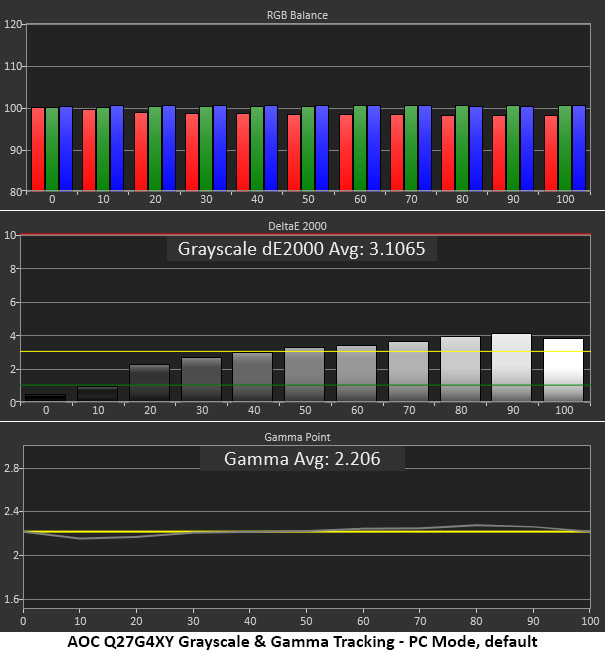
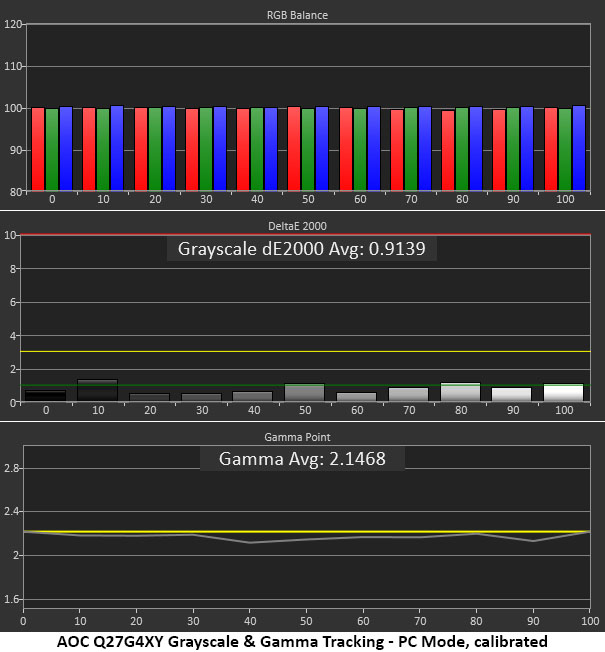
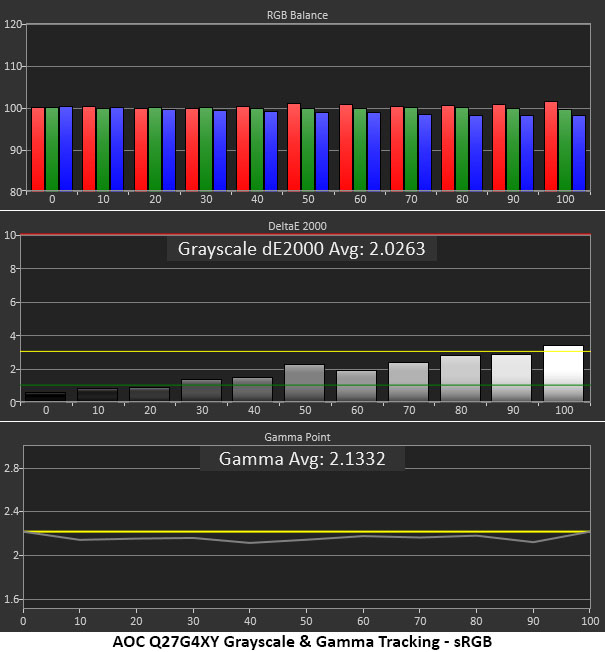
Though the Q27G4XY has many calibration options, it can be enjoyed without adjustment. I noted a slightly cool tone in grayscale patterns, but this error is hard to spot in content. Only the 50 to 100% brightness steps exceed the visible threshold of 3dE. Gamma tracks almost perfectly along the 2.2 reference line.
After calibration, the grayscale error is well below the visible point and gamma has lightened a tad. The Q27G4XY’s high contrast prevents this from being an issue. The image remains deep and saturated. This is excellent performance.
If you select the sRGB color gamut, you can’t create a separate grayscale calibration for it. The same white balance settings are used for all gamuts. But in my test, the change was very small. Only 100% cracks the 3dE line and gamma stays the same.
Comparisons
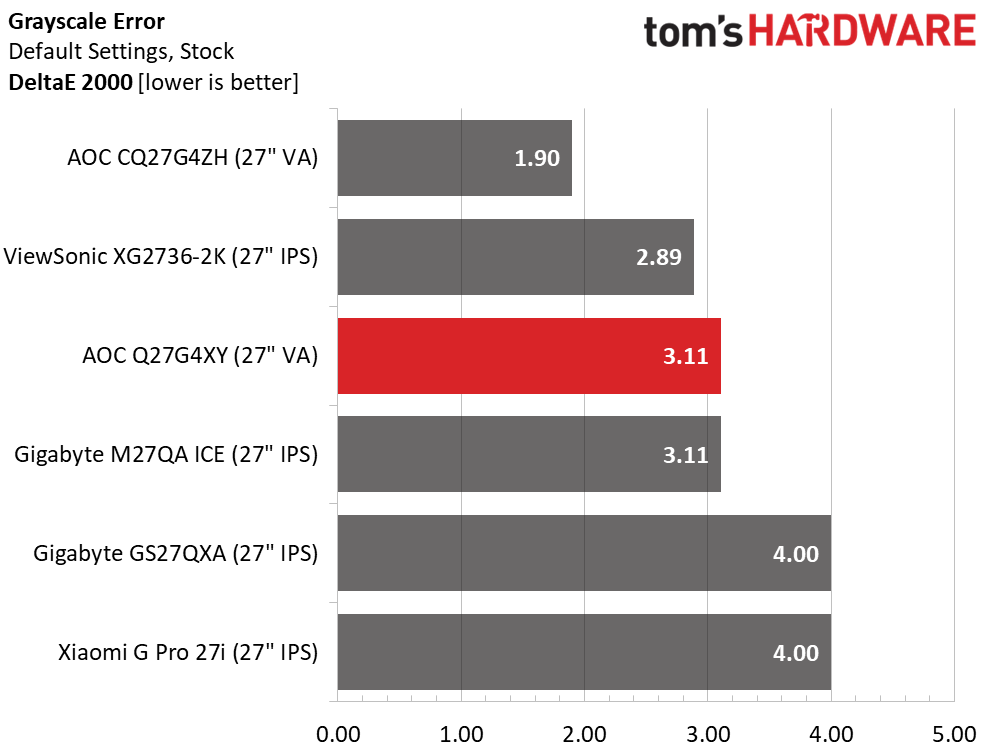
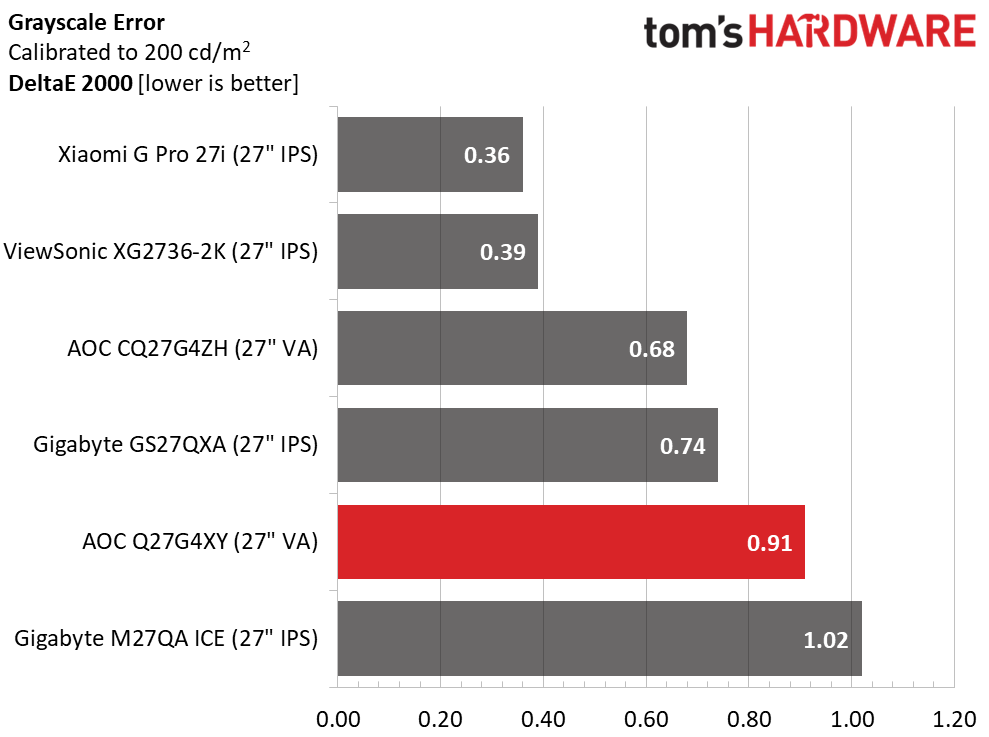
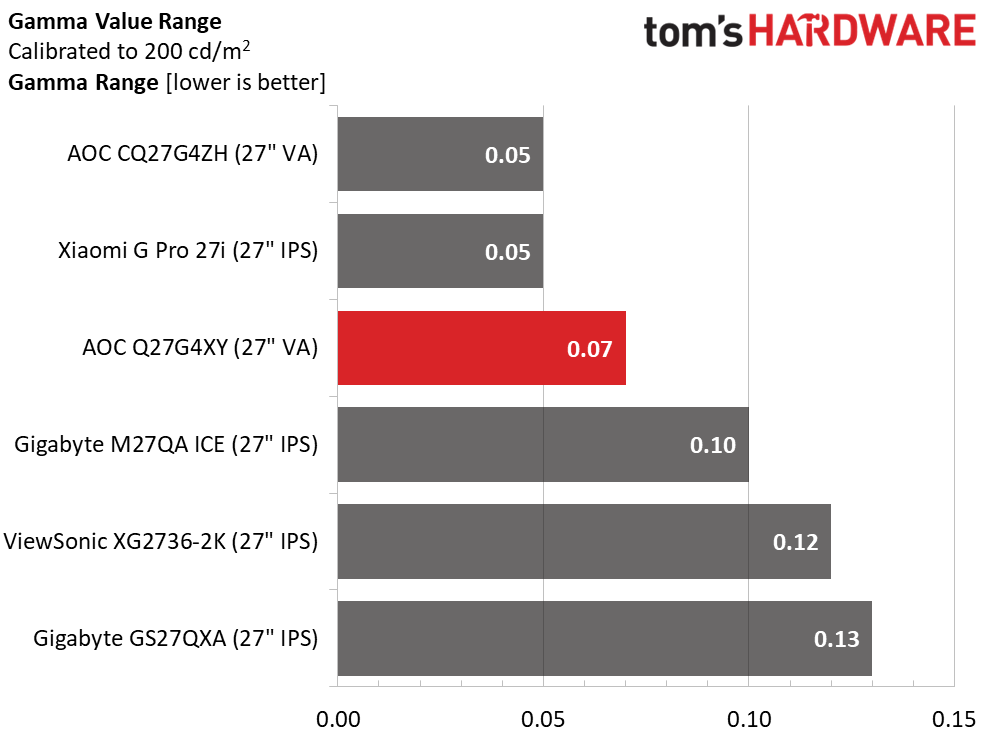
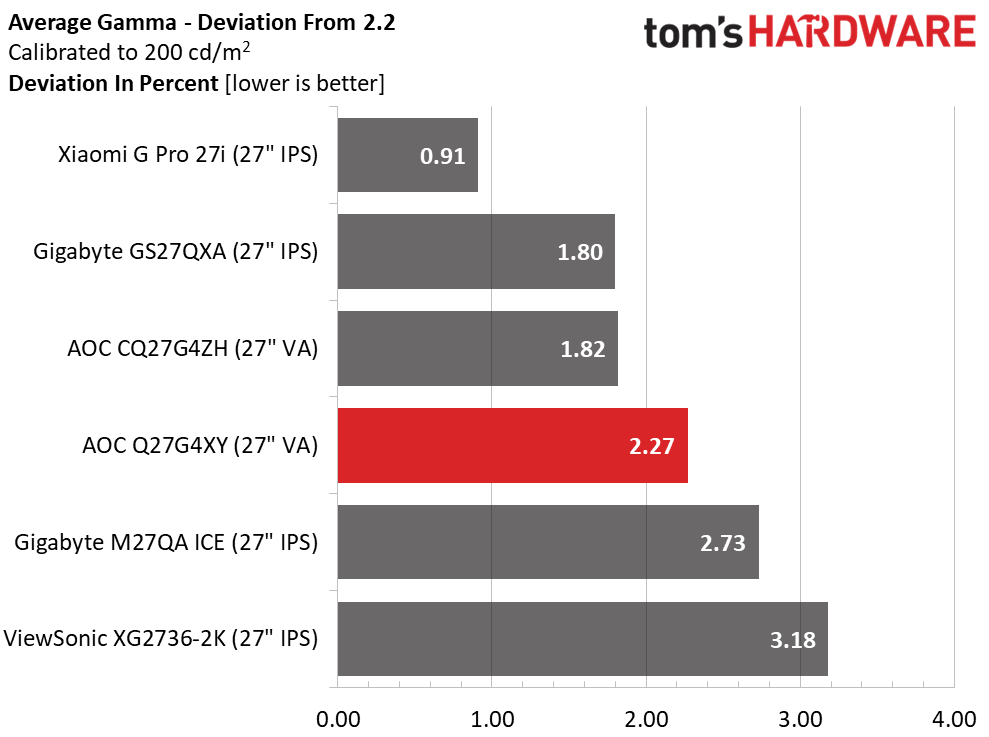
The Q27G4XY’s 3.11dE out-of-box result puts it on par with most gaming monitors at this price point. It doesn’t need calibration but there is a visible benefit when you do. That’s true of all the monitors, which calibrate to a high standard. The Q27G4XY’s fifth place finish is not a negative, 0.91dE is excellent performance.
Though gamma accuracy took a slight hit after adjustment, it’s still good enough for an excellent image with deep contrast and sharp detail. The value range is very tight at just 0.07 and the average is only 2.27% off the mark. The actual value is 2.13, well within an acceptable tolerance.
Get Tom's Hardware's best news and in-depth reviews, straight to your inbox.
Color Gamut Accuracy
Our color gamut and volume testing use Portrait Displays’ Calman software. For details on our color gamut testing and volume calculations, click here.
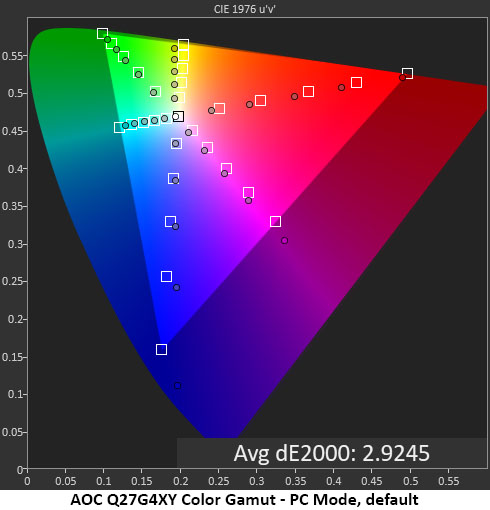
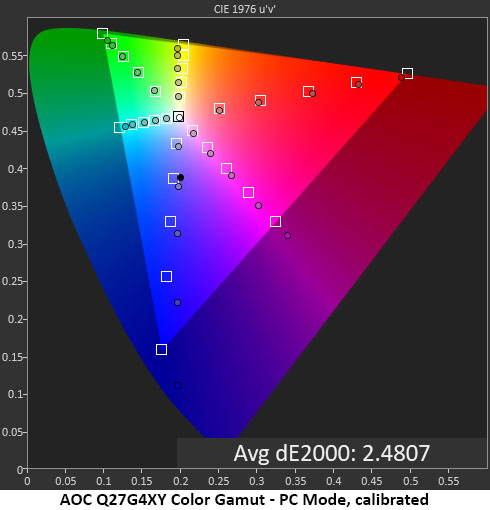
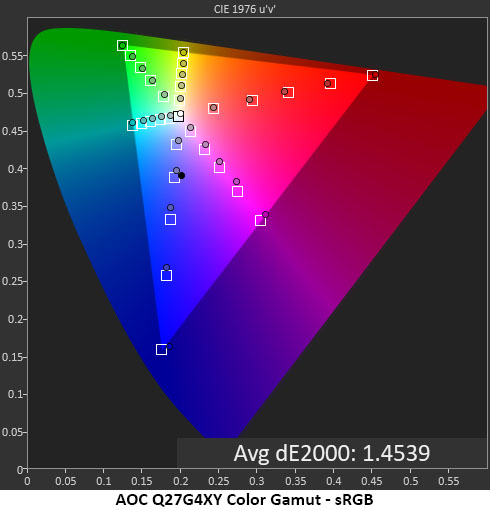
The Q27G4XY’s default gamut measurement is solid, but I noticed some undersaturation in the red and green primaries. It’s barely visible in content, but since a saturation slider is included, I used it to improve both colors. The tradeoff is a bit of bonus blue, but I didn’t find that to be a visible negative. The gain in accuracy is small, but the picture looks better.
The sRGB option is very accurate and will satisfy those needing a color grading monitor, or who just want to use the correct gamut for SDR content. This is excellent performance.
Comparisons
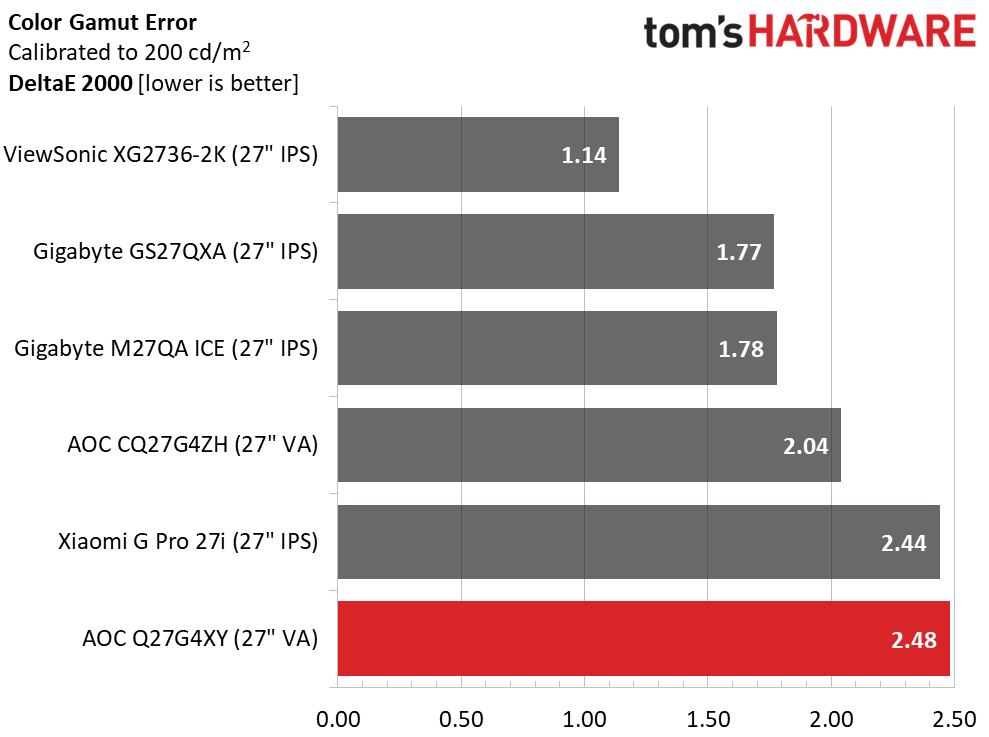

Competition in this segment is certainly fierce when the Q27G4XY comes last with a color error of 2.48dE. That’s comfortably below the visible threshold, so in a visual comparison, these monitors will all look alike. I have no complaints, the Q27G4XY is very accurate.
Though it covers just over 88% of DCI-P3, it comes up a bit short when compared to the color volumes of other 27-inch QHD screens. If you want maximum color, the Xiaomi offers a Quantum Dot layer that tops 111% coverage. The Q27G4XY is plenty colorful, just not as much as others. It’s 98.88% coverage of sRGB is nearly ideal.
Test Takeaway: The Q27G4XY isn’t quite as colorful as other speedy 27-inch QHD screens, but the difference is small at best. It is very accurate out of the box and calibrates to a high standard with a comprehensive set of controls that include two-point white balance and color management, two things rarely seen in any gaming monitor.
MORE: Best Gaming Monitors
MORE: How We Test PC Monitors
MORE: How to Buy a PC Monitor
Current page: Grayscale, Gamma and Color
Prev Page Brightness and Contrast Next Page HDR Performance
Christian Eberle is a Contributing Editor for Tom's Hardware US. He's a veteran reviewer of A/V equipment, specializing in monitors. Christian began his obsession with tech when he built his first PC in 1991, a 286 running DOS 3.0 at a blazing 12MHz. In 2006, he undertook training from the Imaging Science Foundation in video calibration and testing and thus started a passion for precise imaging that persists to this day. He is also a professional musician with a degree from the New England Conservatory as a classical bassoonist which he used to good effect as a performer with the West Point Army Band from 1987 to 2013. He enjoys watching movies and listening to high-end audio in his custom-built home theater and can be seen riding trails near his home on a race-ready ICE VTX recumbent trike. Christian enjoys the endless summer in Florida where he lives with his wife and Chihuahua and plays with orchestras around the state.
-
truerock I was looking for an inexpensive 4k, 120Hz PC monitor and purchased a 28" (28 is not a typo) open-box Samsung - Odyssey G7 28” 4K UHD IPS AMD FreeSync Premium Pro & G-Sync Compatible Smart 144Hz 1ms Gaming Monitor.Reply
I went to BestBuy and BestBuy had over a hundred of these things in open boxes for $180.
The problem was they are "Smart". Note you would never know they were "smart" unless you looked for some fine print.
Engage rant mode...
Bottom line... I HATE smart monitors. They are a pain. I do not want my PC monitor to have any oddball stuff. I don't want speakers or USB hubs, coffee makers, etc in/on my PC monitor.
I want the video panel, 1 DisplayPort 2.1 port, and one power port. Nothing else
Rant mode off.
